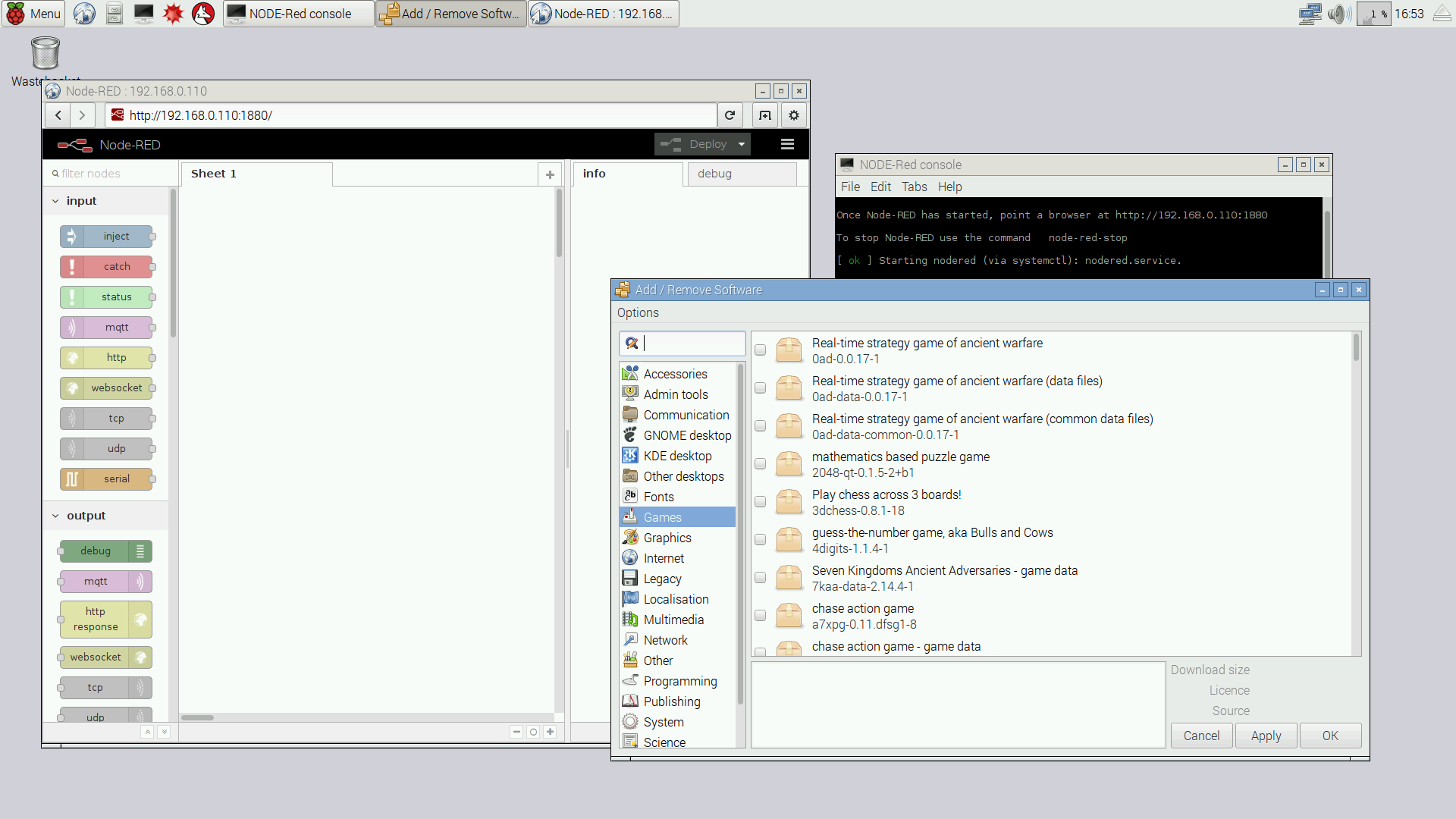Lazarus Raspi Package Com Port
This page describes various ways of accessing hardware devices on Lazarus. These devices include, but are not limited to: ISA, PCI, USB, parallel port. Dec 24, 2013 TLazSerial: serial port component for. Serial port component for Lazarus. Nowhere can I find out clearly how to install 1.0.6 on the Raspberry Pi with.


Introduction There is already much information in Web pages about how to set up a Raspberry Pi. For those who prefer to refer to a book, we can recommend Raspberry Pi User Guide by Upton (co-creator of the Pi) and Halfacree.
Before buying accessories, you are advised to read the huge of both acceptable and incompatible devices and SD Cards. Note that the early SD Cards (or.img files of the Debian OS and starter applications for downloading and copying to the cards) are intended mainly for developers and you may be spared for some of the tasks that we found necessary.
This page covers recommended hardware. Follow the links at the bottom of the page for guidance on setting up the Pi then installing and using Lazarus. Essential for all/most uses: • the board! • 5 volt power supply with micro connection, capable of supplying a current of 0.7 amps. • Screen with appropriate cable and adaptor if necessary. (We use an HDMI to DVI converter to connect the Pi to a monitor, which is shared with a PC connected via the analogue VGA port. A button on the monitor conveniently switches between the analogue and digital (DVI) inputs).
• USB keyboard • USB mouse • 4GB SD Card • access to a PC with a card reader/writer (or a USB card reader/writer to connect to a USB port on a PC) to write a configuration file. Very desirable: • Cable to link to a router for Internet access to enable Web browsing and easy installation of applications.
• Powered USB hub. (The two USB ports take a mouse and keyboard but you are likely also to want to transfer data to and from a USB memory stick.
Having a powered hub also means that you do not need to be as careful when selecting your peripherals on the basis of power-rating). • USB memory stick for transferring data. • An 8 GB SD Card to allow you to install more applications. We can confirm the compatibility with the Pi of Transcend 4 and 8 GB SD Cards. • A second SD Card to accept a clone of the first as a backup.
I believe those are not visible components, so it is only necessary that you extract them somewhere and add that location your library path /include path under project project options compiler options path I will have a look later today (my pi day ) if I can write a little usb example for you both. But this older example may still work:. I used the interface for my own USB programming on the Pi.
Make sure you have libusb-1.0 or higher, not 0.1. It is in the Raspbian repository but not installed by default. (use aptitude). Hi, I haven't got any further with libusb.
I have found that Sdpo v0.2, which is not a component like v0.15 works fine - you just add the unit to your project and away it goes. I want my Pi to talk to a PIC microprocessor and I have used an item from ModMyPi, which is an elongated USB plug which incorporates a USB to serial converter. The Pi recognises it and the PIC end of the cable connects to the PIC's RS232 port.
It's great because there are no drivers to find etc. I would be interested in an example using libusb though. Yes, it shows up as ttyUSB0, as it is the first USB serial device. The GPS contains a serial to USB converter chip, a PL2303, which is what the Pi recognises.
To read data from the GPS, you have two options: 1). Read the raw data directly on ttyUSB0 2). Have the gpsd daemon running and read data from port 2947.
This has the advantage that the daemon can handle more than one program asking for gps data at the same time. It also takes care of baud rate etc and provides json sentences of data. Buku Untuk Belajar Piano. The PIC micro is a different kettle of fish.